This Week At Angama #77
26 July 2019 | This Week at Angama | Adam Bannister
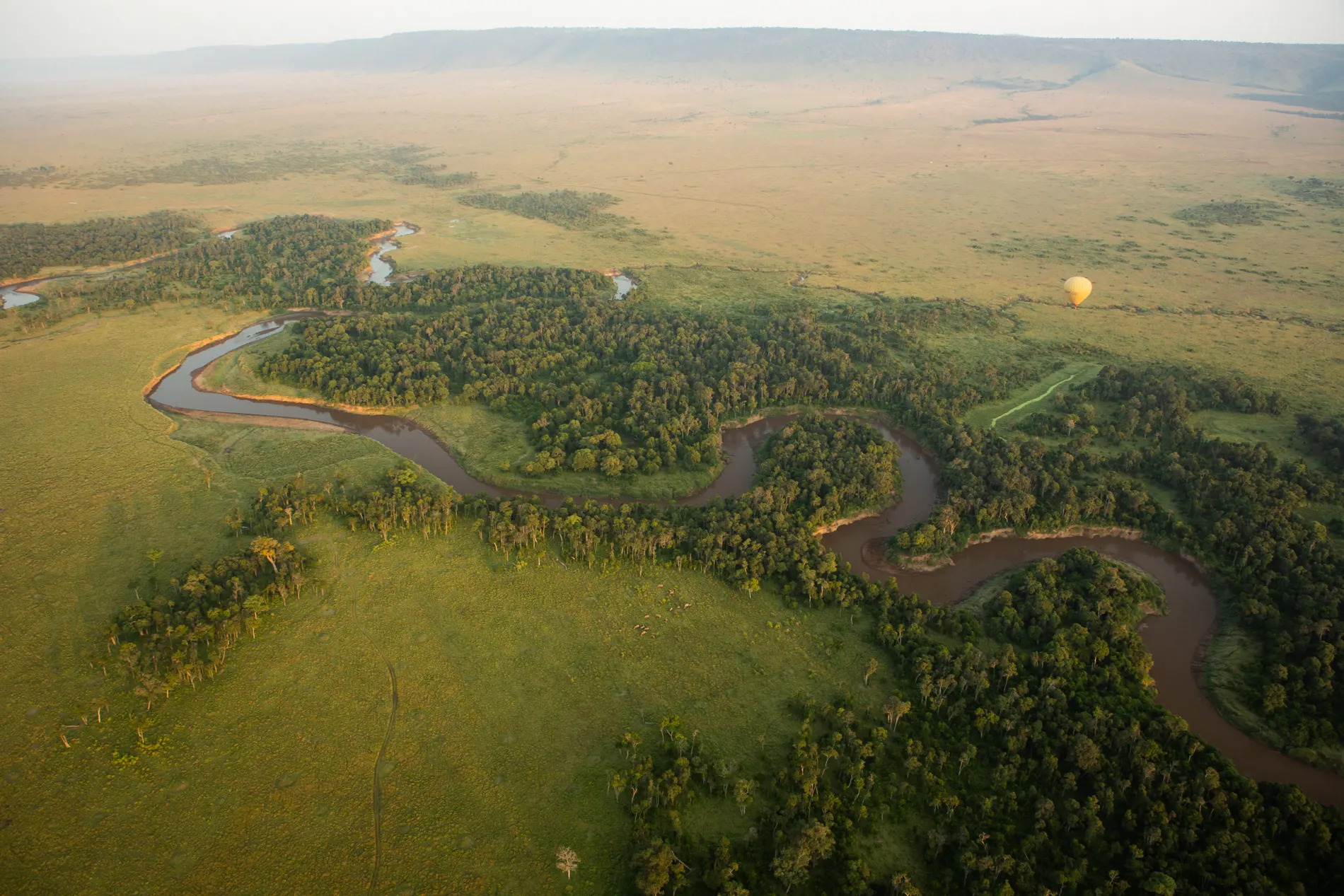
Amongst the photographic community, the Maasai Mara is known as a wilderness area that never fails to produce exceptional sightings. I agree. Every day this week we have witnessed drama unfolding along the banks of the river that winds through the heart of this majestic land. [f 5.6, 1/125, ISO 800, +0.67]

Most days in the Mara begin early, but on ‘hot air balloon days’ they start even earlier than usual. The air was cold and pitch black as I made my way to the launch site. All thoughts of lost sleep are immediately forgotten as they turn on the burners. Regardless of how many balloons I have been on, it’s impossible to get bored of flying. [f 3.5, 1/40, ISO 1250, +1.0]

Floating into the sky is the best way to get perspective of the Mara; to understand the terrain and to see exactly where it is that you are. As the sun rises, golden rays shoot in all directions. [f 4.0, 1/250, ISO 800]
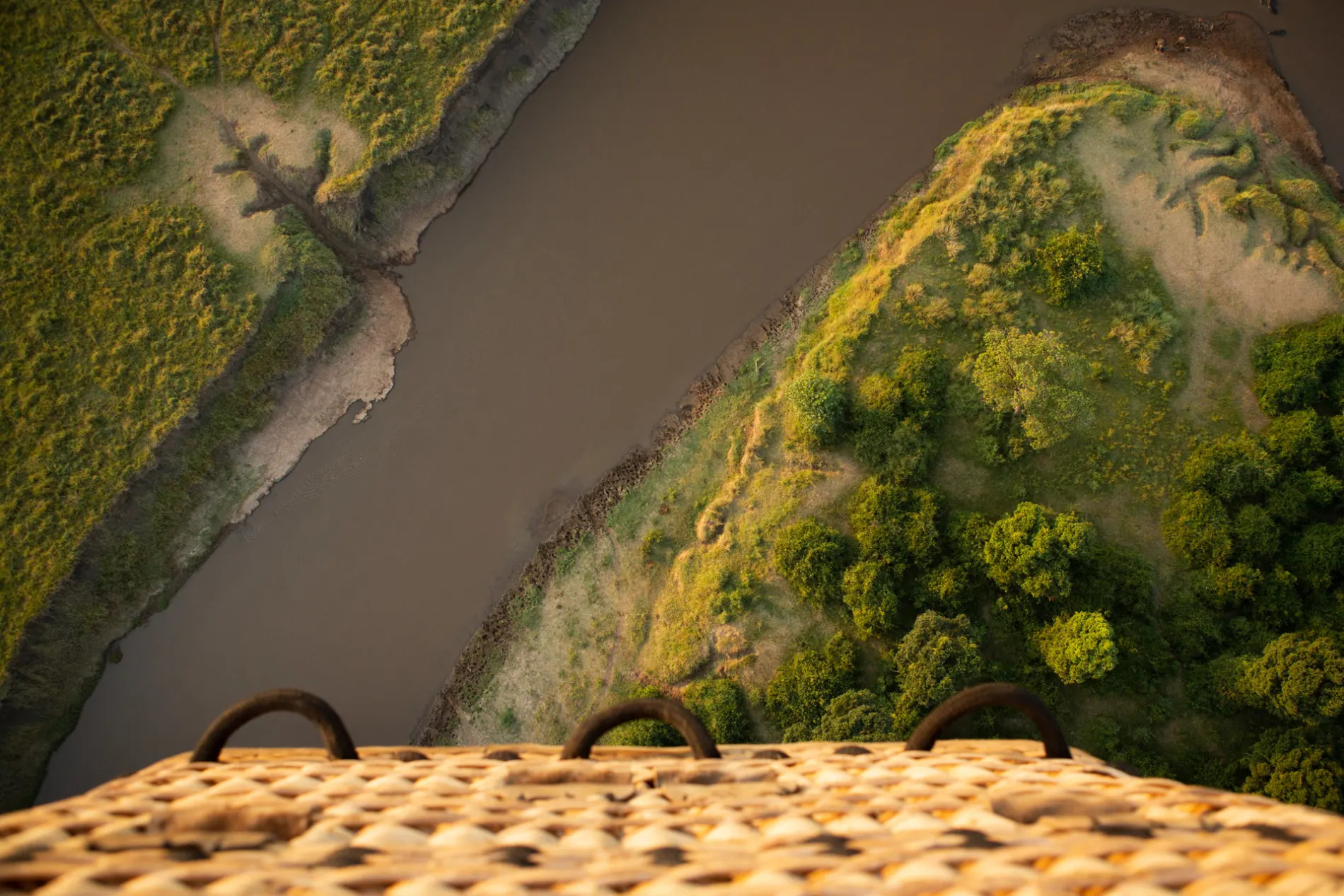
The Great Migration has yet to make it this far north along the river. From up in the balloon, things look so peaceful. [f 4.0, 1/200, ISO 800]

Meanwhile, as you return to ground level and drive half an hour south, the river is a hive of activity. From the south and from the east, the wildebeest herds run for the river. [f 4.0, 1/800, ISO 250]

Photographing the huge herds is a complicated task – my suggestion is to always look at getting a mixture of close-up and long-distance shots. Extremely wide shots, such as this, really help to set the scene. [f 4.5, 1/640, ISO 640, +0.67]

The last week has seen numerous crossings every day. Some are small and over quickly, others mass into the tens of thousands and last half an hour or more. [f 4.5, 1/1600, ISO 500]
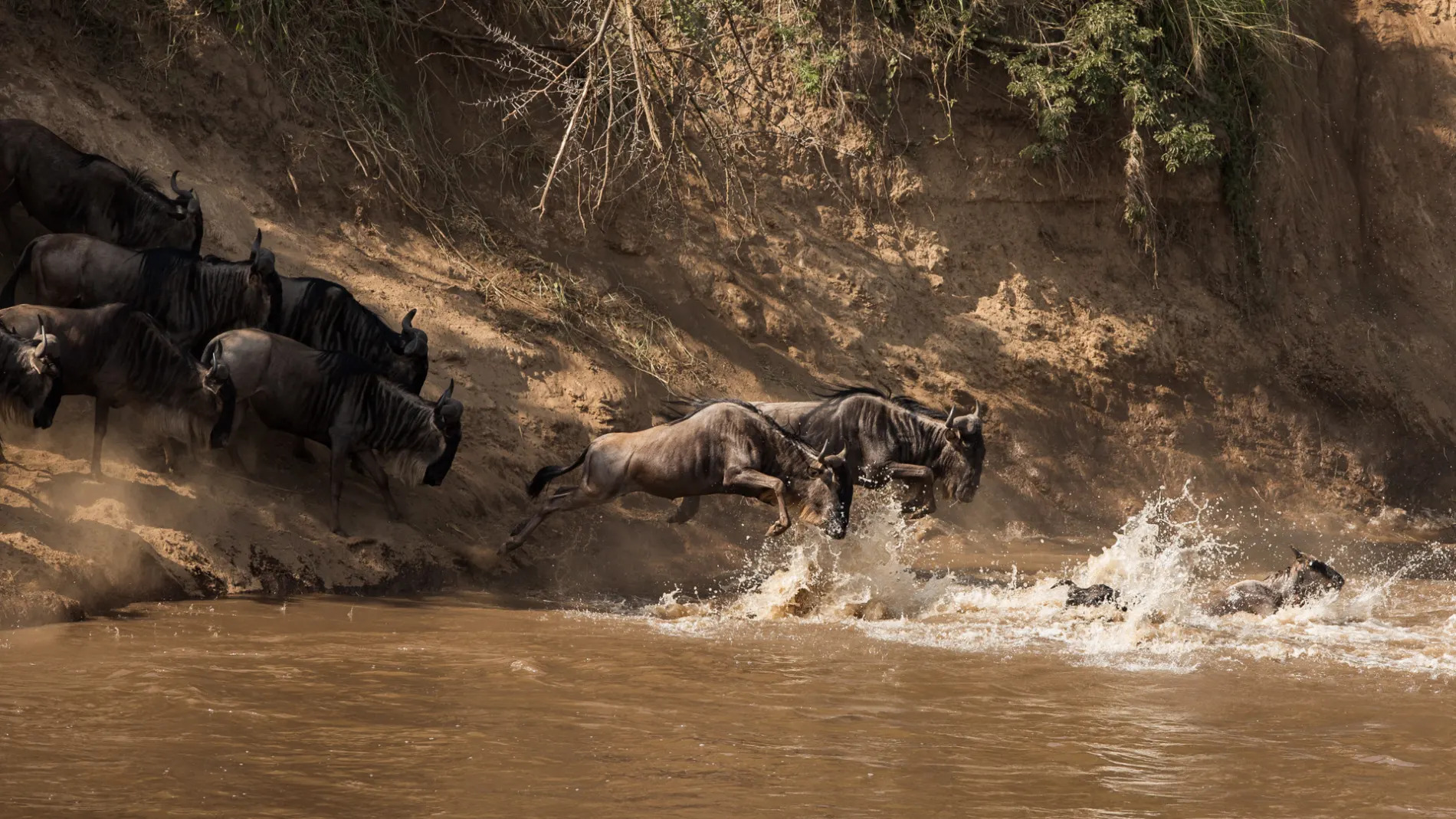
For me, the excitement of a crossing lies in the entry of the animals into the river. [f 4.5, 1/1600, ISO 500]
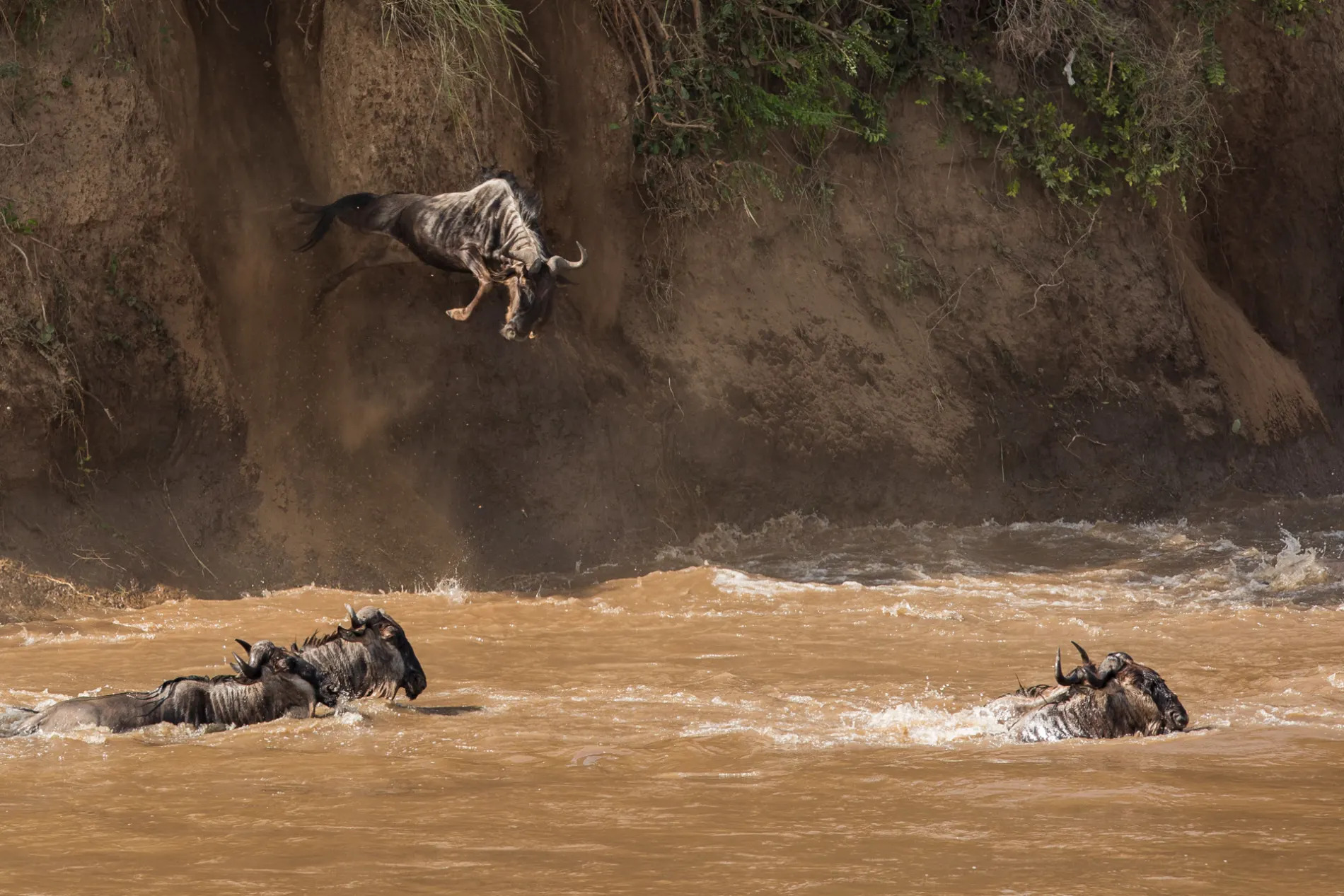
The southern crossing points are dramatic as they require the herds to navigate down steep cliffs. The wildebeest will sometimes throw themselves off these cliffs to get into the water. [f 4.5, 1/1000, ISO 500]
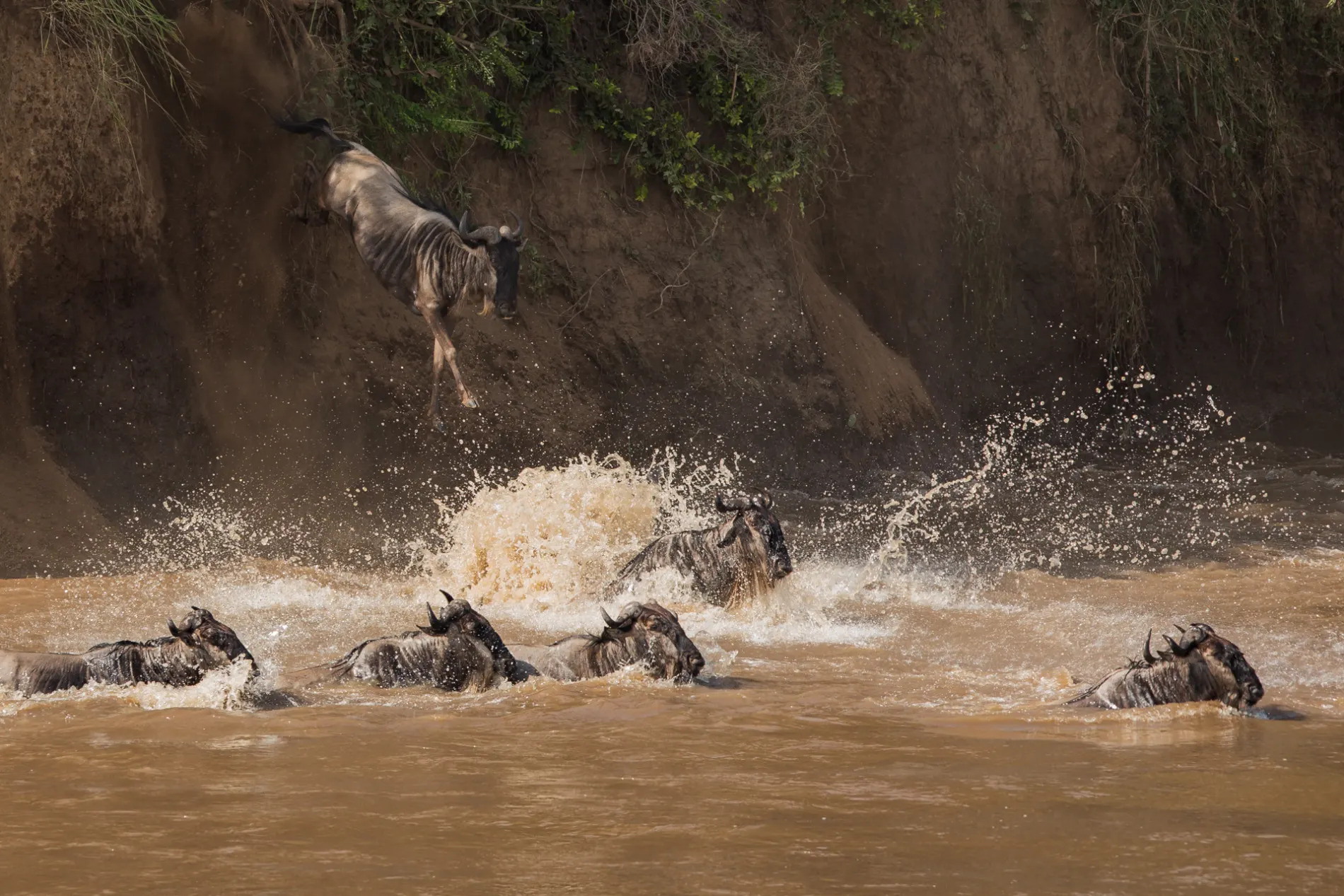
It is impossible to capture the sounds of the splashes as the animals fall from great heights. [f 4.5, 1/1000, ISO 500]

Zebras usually lead the way, but on occasion they let the wildebeest forge the path. After a while, you have an amalgamation of both species plunging into the flowing waters and swimming for their lives. [f 4.5, 1/2000, ISO 640]
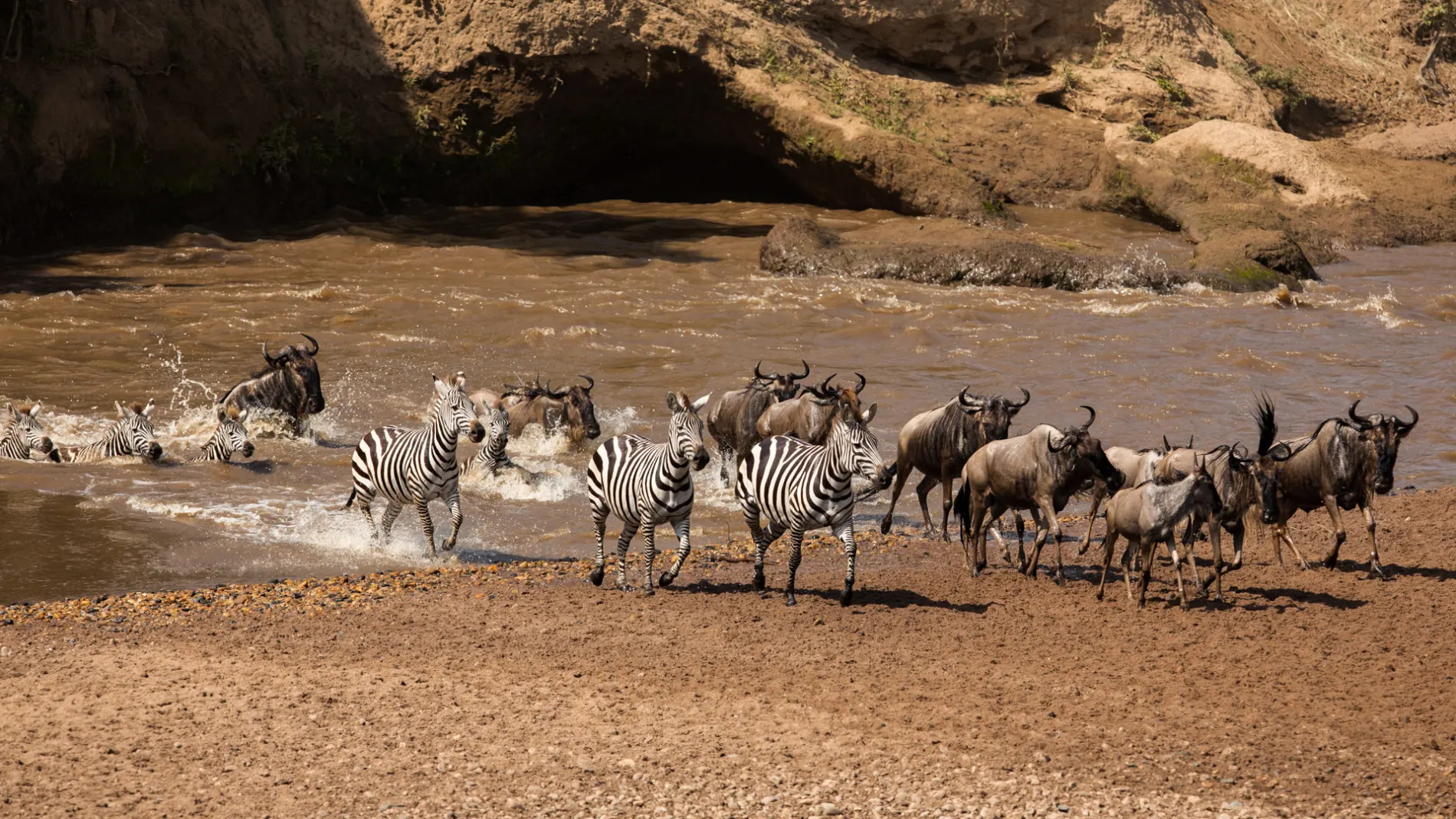
There is excitement and great relief as they emerge on the other side. [f 4.5, 1/2000, ISO 400, +0.33]
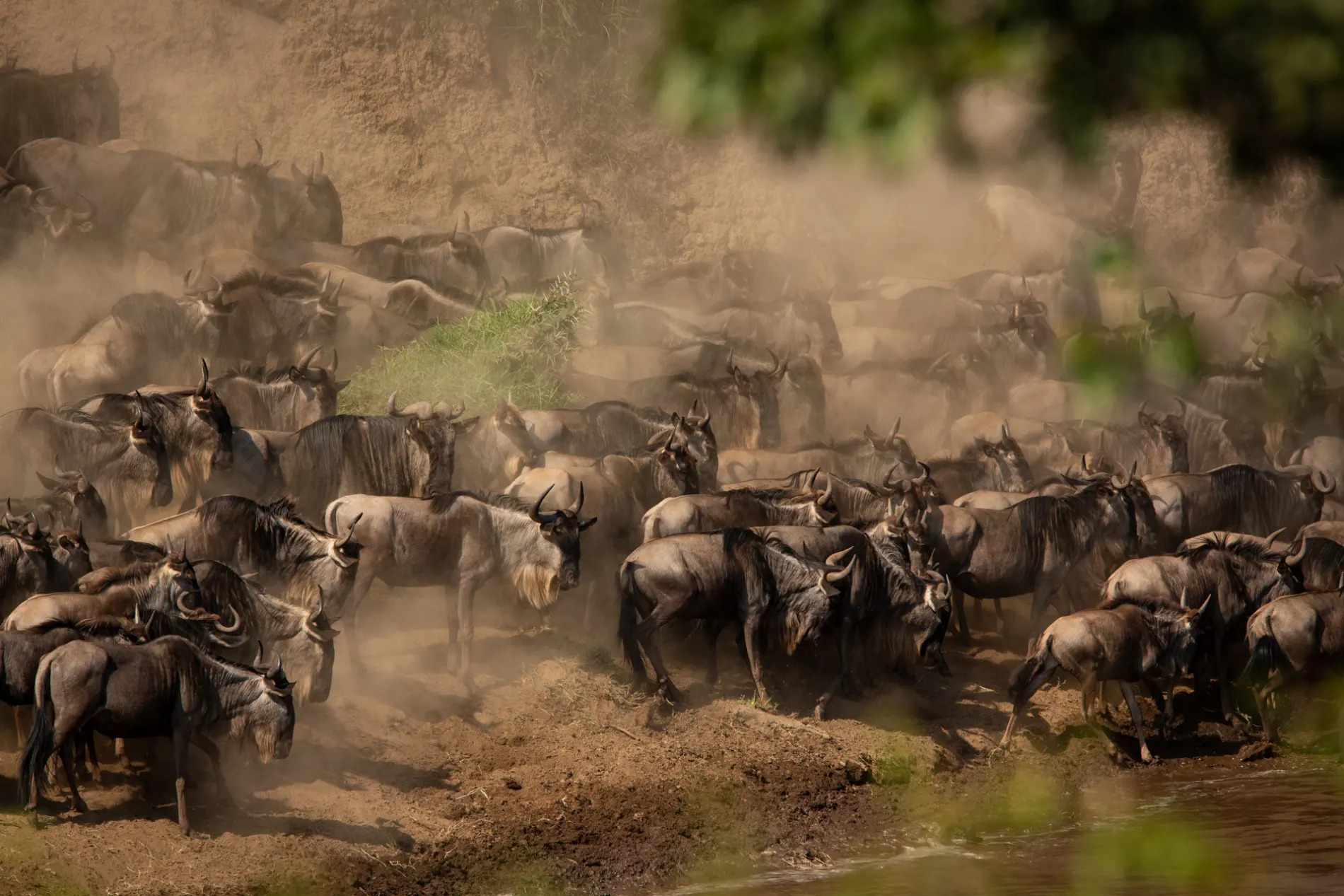
Of course, you can’t always get the perfect position from which to watch the crossings. My suggestion is to make the most of what you find around you – use vegetation as natural frames, instead of getting frustrated that it is in your way. [f 8.0, 1/1000, ISO 400]

Embrace the dust and use it to show the drama. [f 8.0, 1/1000, ISO 400]
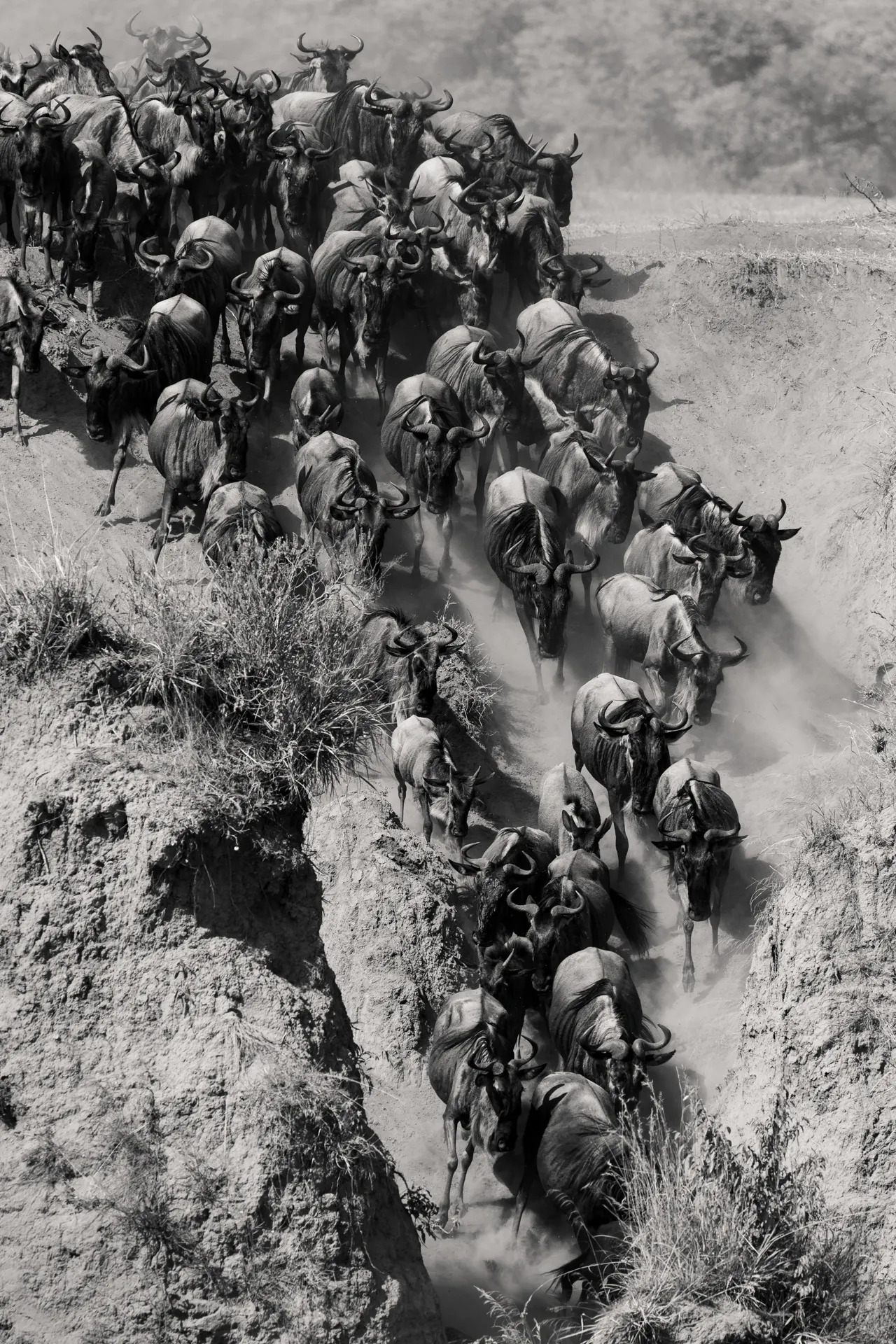
And look for shapes within the animals and the landscape. When I saw this crossing forming, I immediately saw a rather abstract image of the outline of the continent of Africa. I’m aware it is rather abstract, but if you use your imagination, it is quite fun to think of a map of Africa filled with wildebeest. [f 7.1, 1/1250, ISO 320, -0.33]
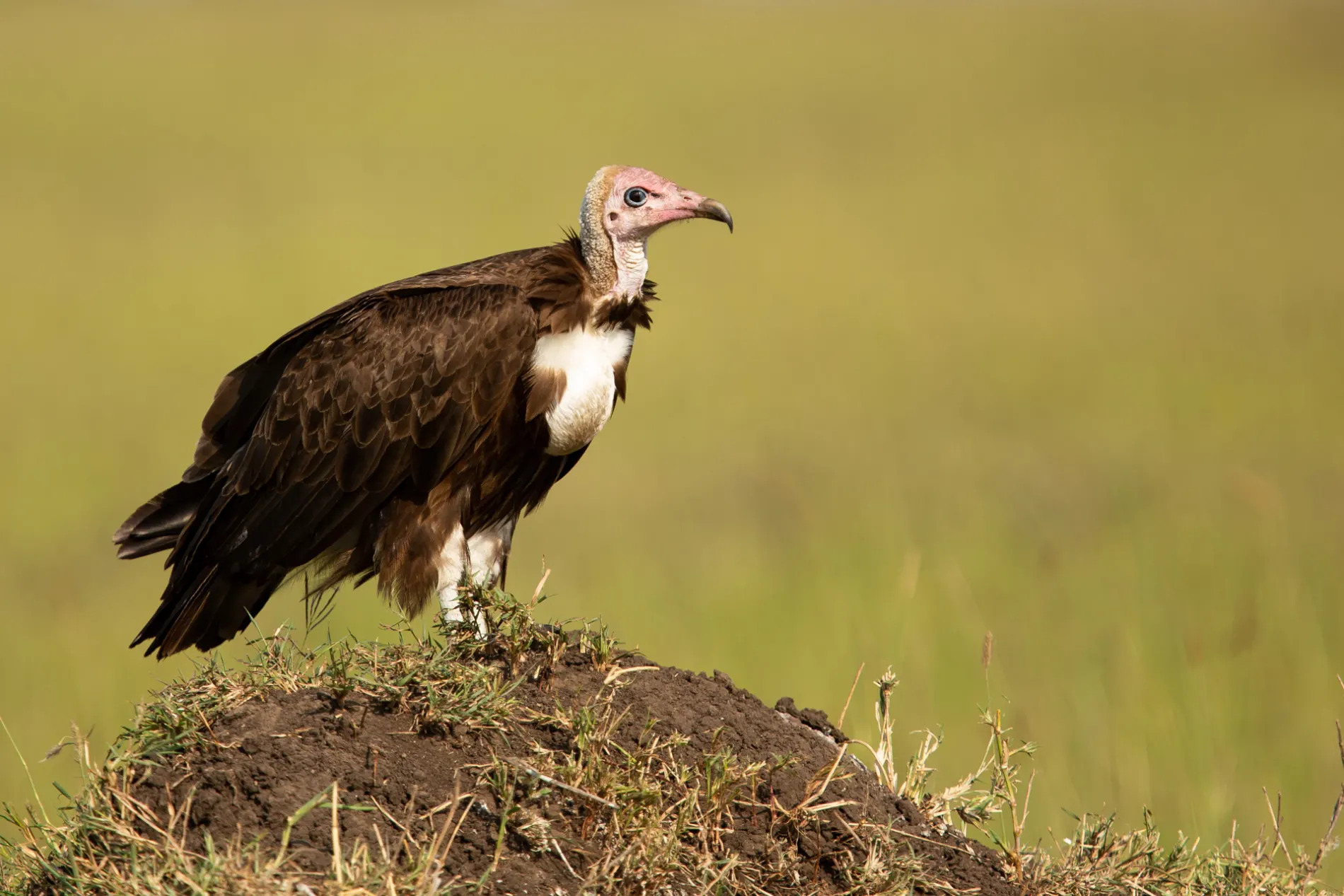
I haven’t managed to get any great vulture shots this week – but I can assure you that I am ready for when the birds start to descend from the sky. For me, there is simply nothing more exciting to photograph. [f 4.0, 1/3200, ISO 320]
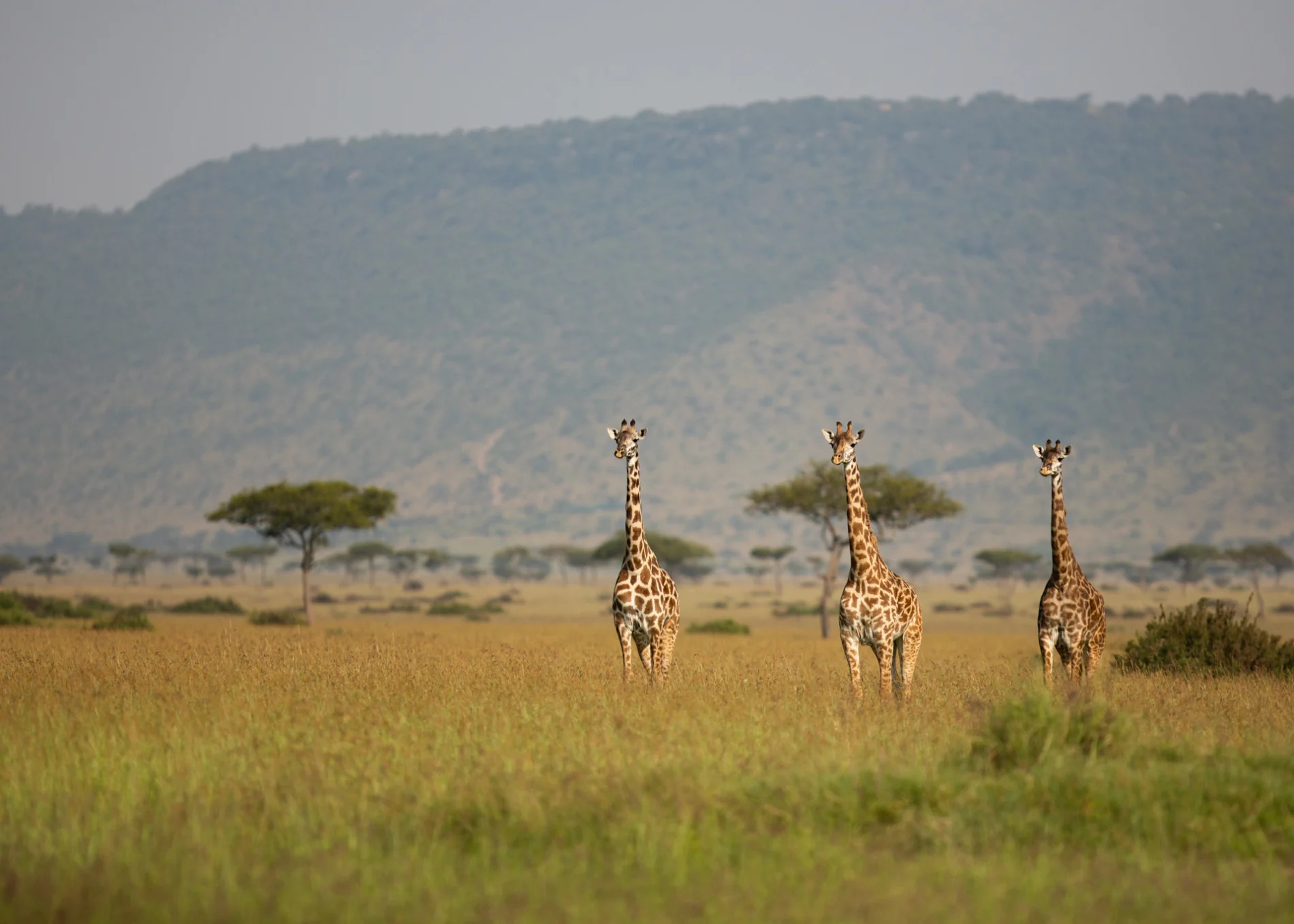
As exciting as the Great Migration is, it is important to keep diversity when on safari and not to become too focused on the wildebeest and the zebra. There is beauty everywhere. [f 2.8, 1/5000, ISO 200]
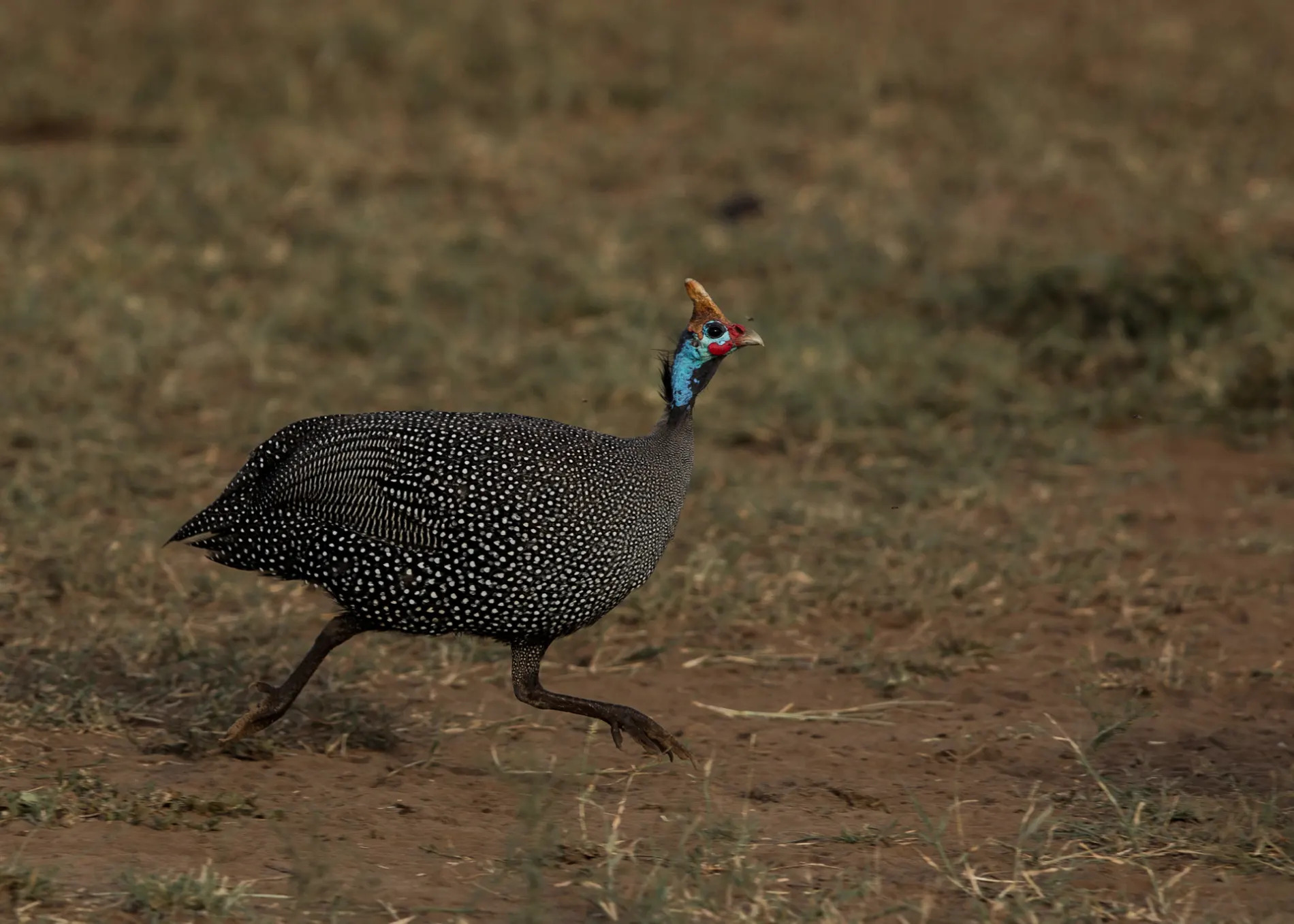
Quintessential Africa. [f 4.5, 1/1000, ISO 320]
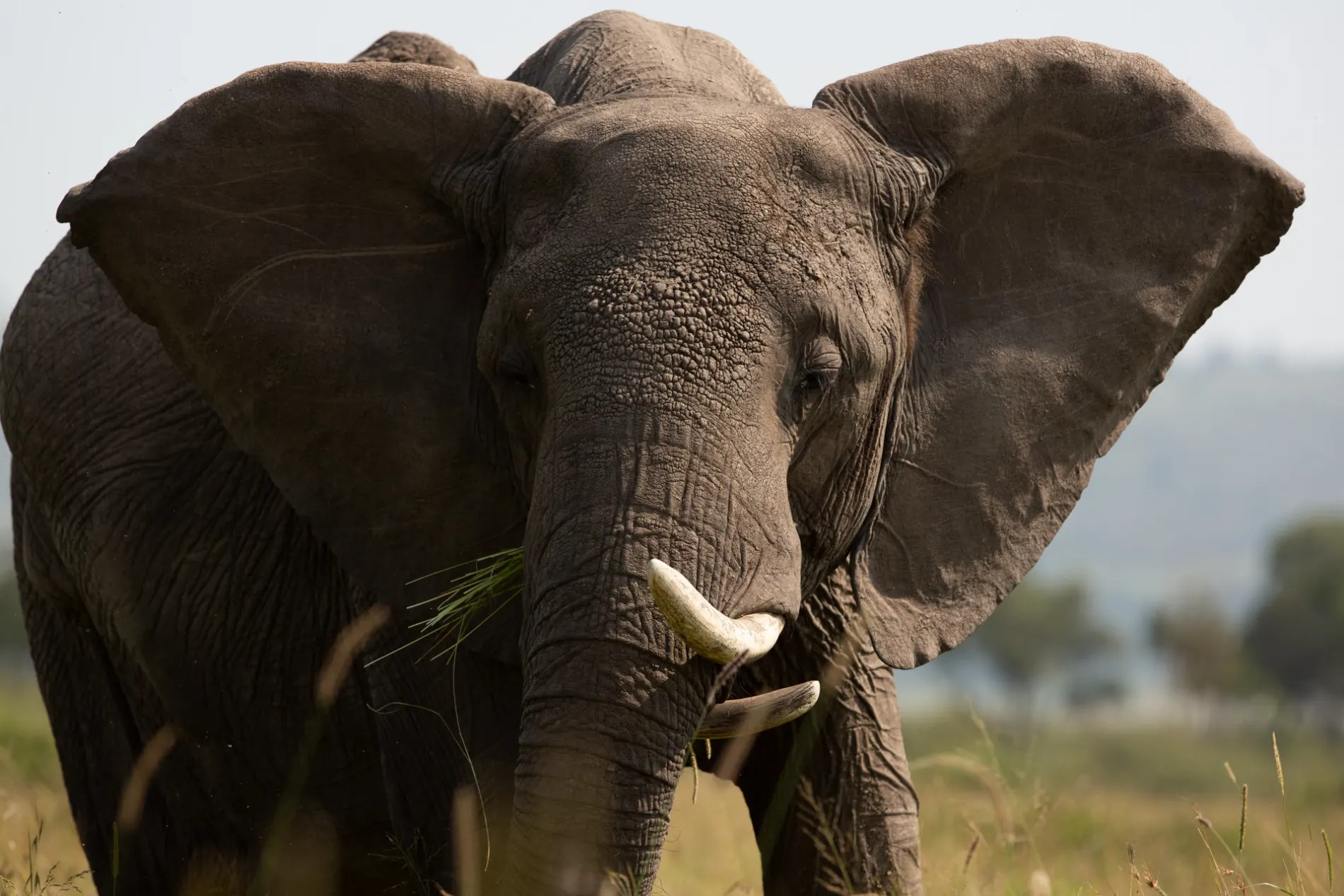
The elephant population is very healthy in the Mara Triangle and sightings of these magnificent animals never cease to amaze me. This female has the most striking of tusks as her right tusk literally wraps around underneath her mouth. [f 5.0, 1/1000, ISO 200, -0.67]
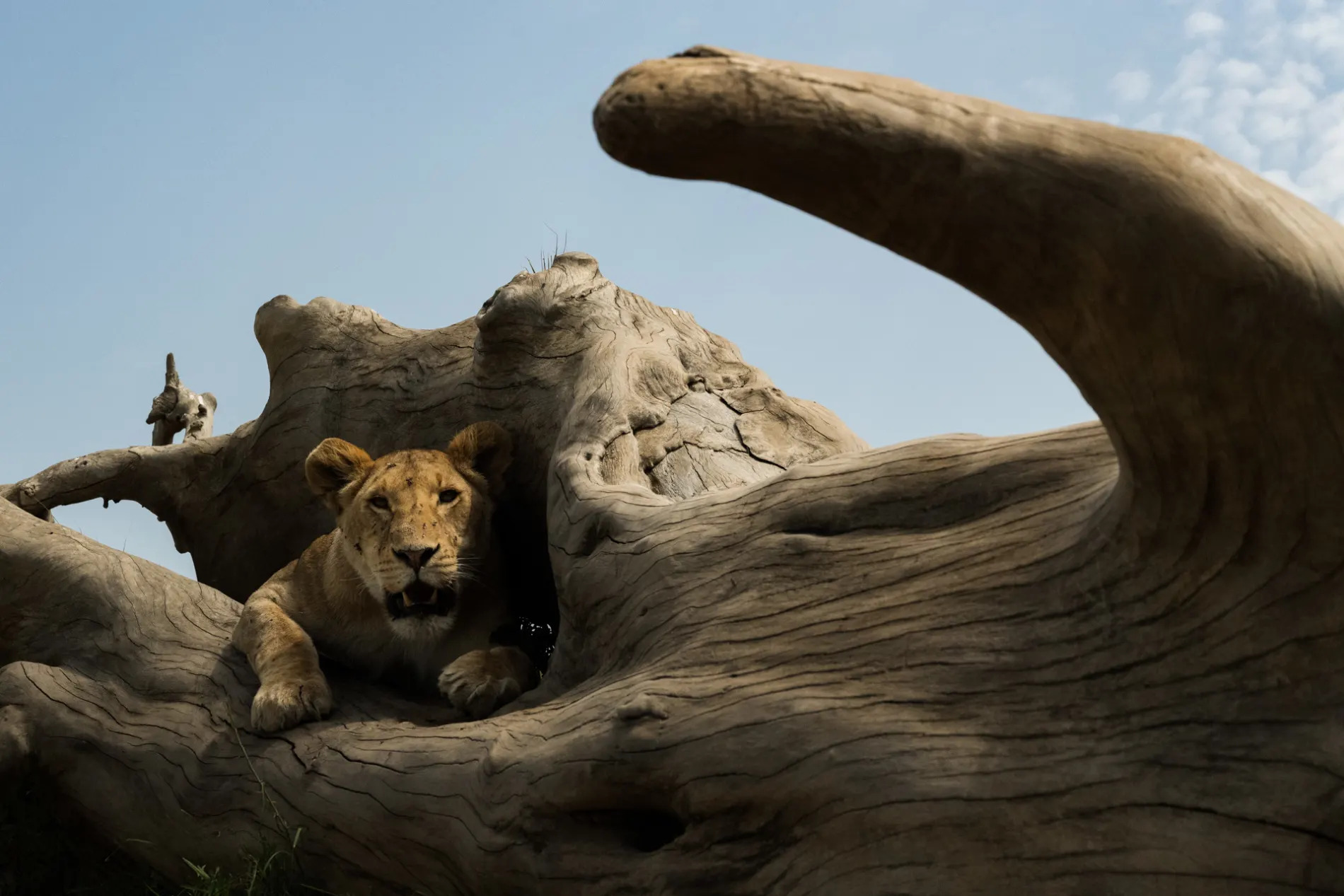
One of the more unusual angles of a lion I have taken. We found this female and a sub-adult male, hiding inside a fallen over windswept tree. The tree resembled driftwood and with some nifty parking I was able to get this incredibly low angle which made for a memorable shot. [f 8.0, 1/4000, ISO 4000]
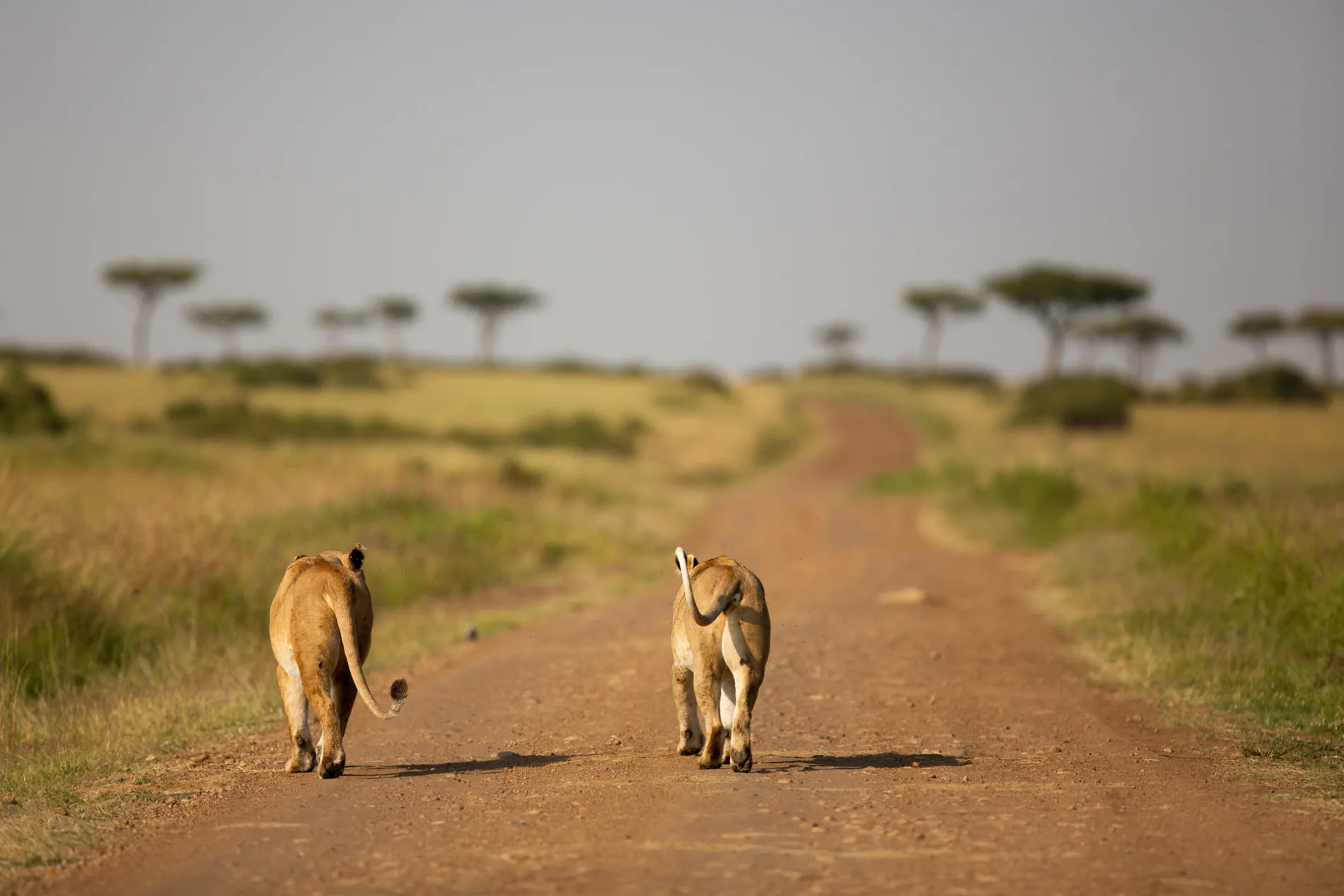
Two lionesses from the Owino Pride walk together – best friends, comrades, teammates. I love how the road disappears into the distance. It helps to tell the story of how these lions are on this journey together. They are inseparable. [f 14.0, 1/1600, ISO 4000]
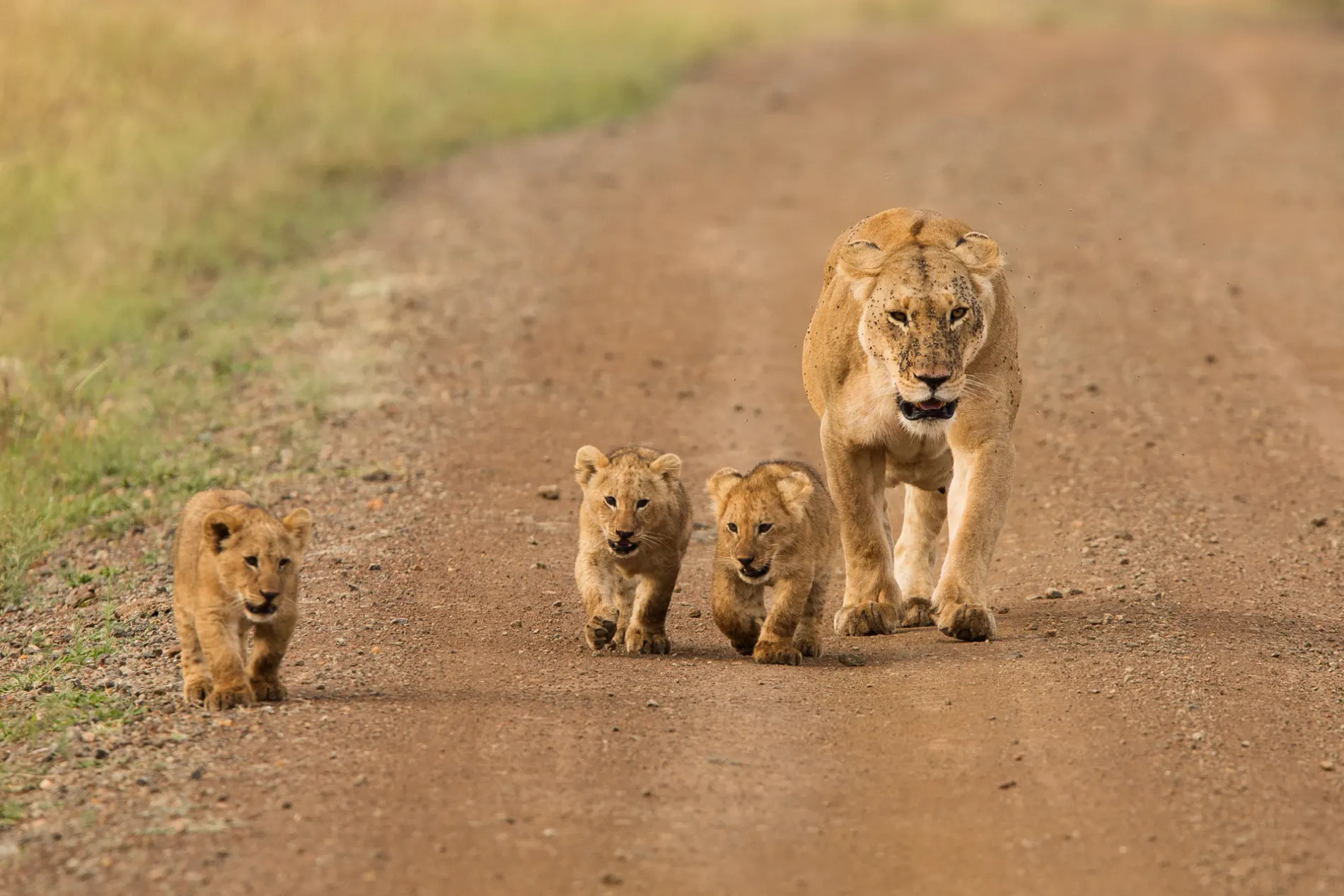
The Salt Lick Pride continues to delight us with wonderful sightings of the new family. [f 5.6, 1/500, ISO 500, +1.0]
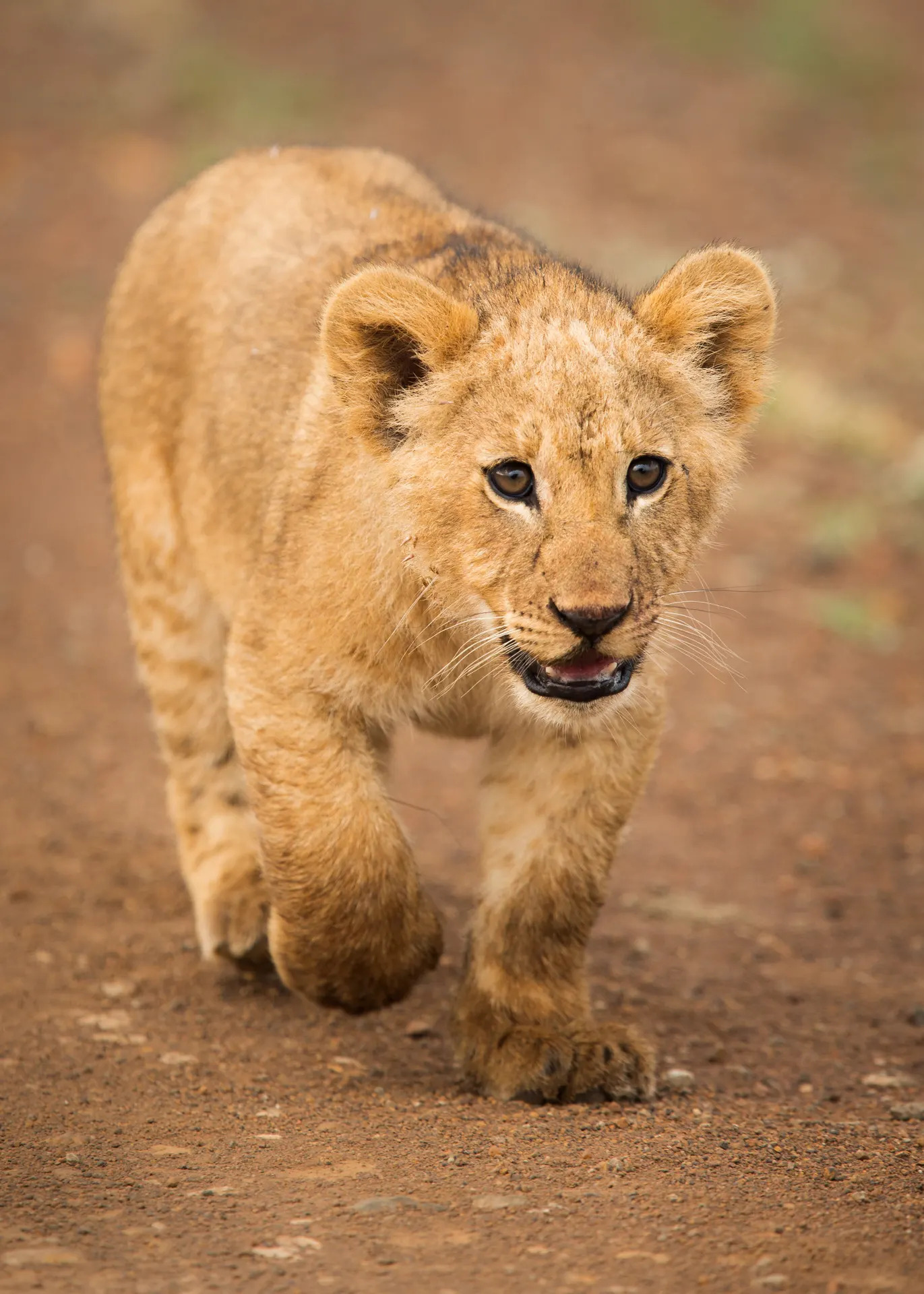
There really is nothing cuter than a lion cub. [f 4.0, 1/500, ISO 500, +1.0]
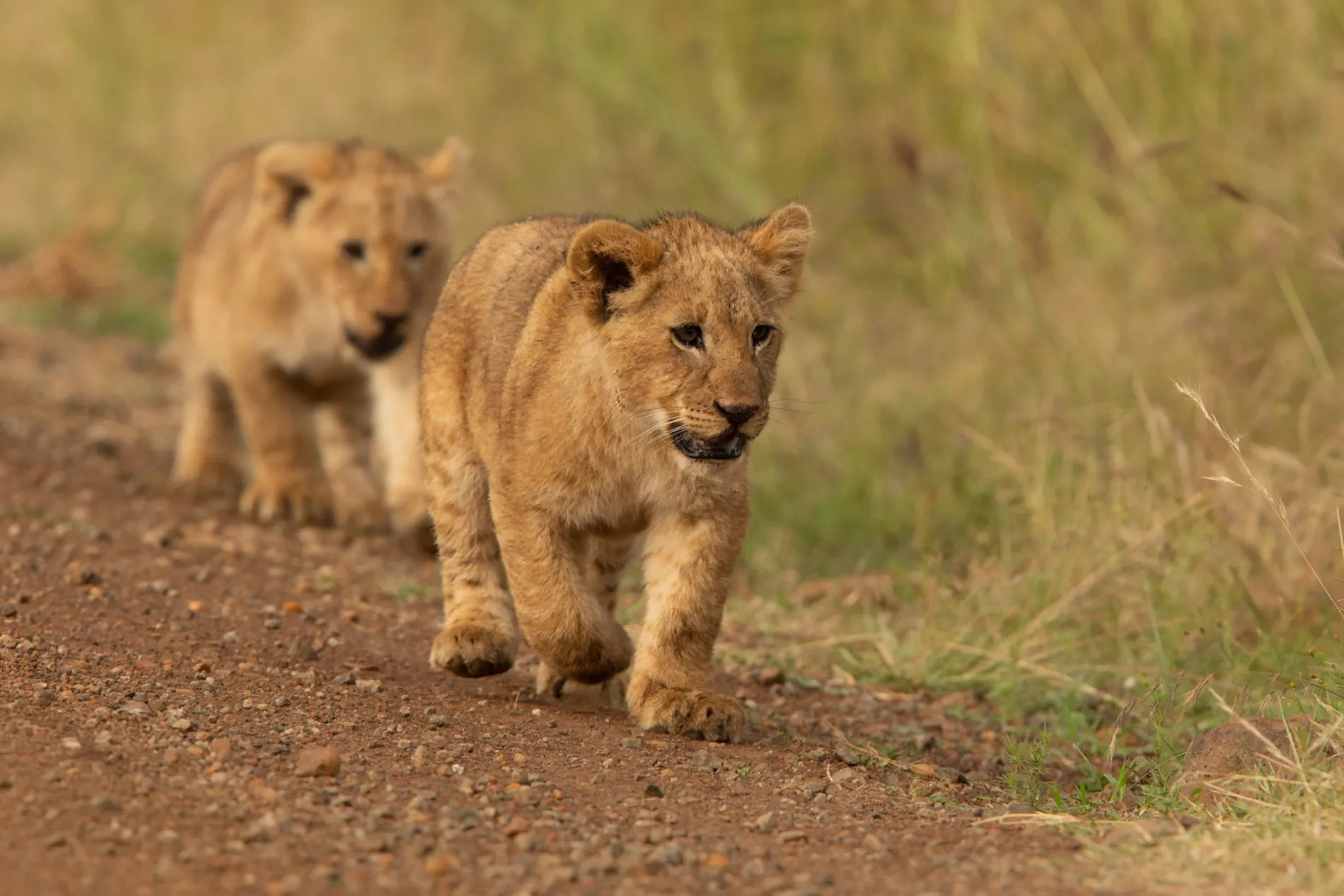
Well I suppose two lion cubs would be cuter. [f 6.3, 1/800, ISO 500, +0.33]
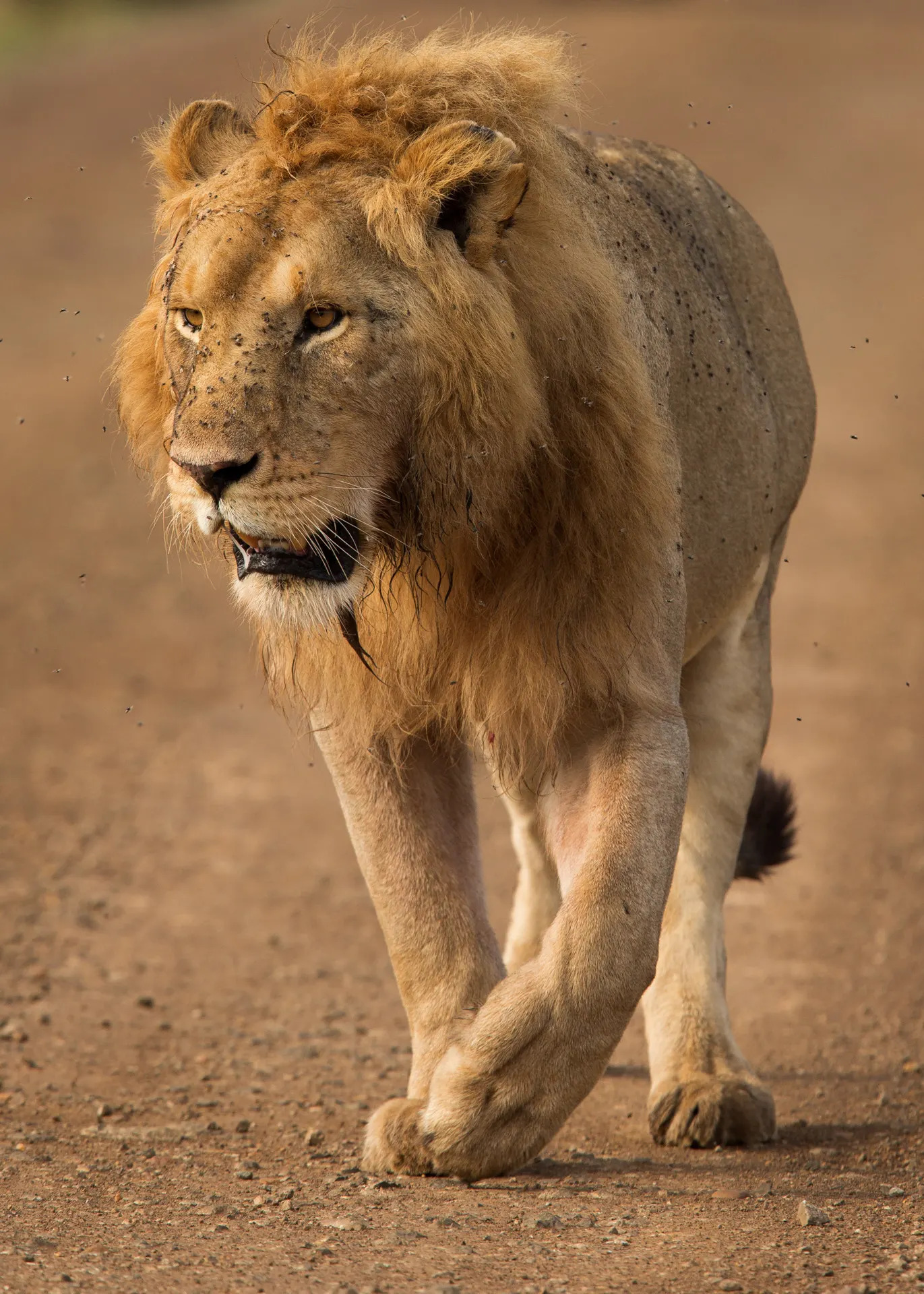
Last week I introduced you to Pharaoh, the younger coalition member who has teamed up with Kipuli. Together, these two move around the Egyptian Goose Dam area. It was fascinating to watch the Salt Lick female with the cubs (above) constantly leading her cubs away from Pharaoh. She even went as far as hiding her three cubs in a drainage line, before returning to the male and trying to drive him away. She is obviously very nervous that when he is alone he may do something terrible to these three young cubs. [f 6.3, 1/800, ISO 500]
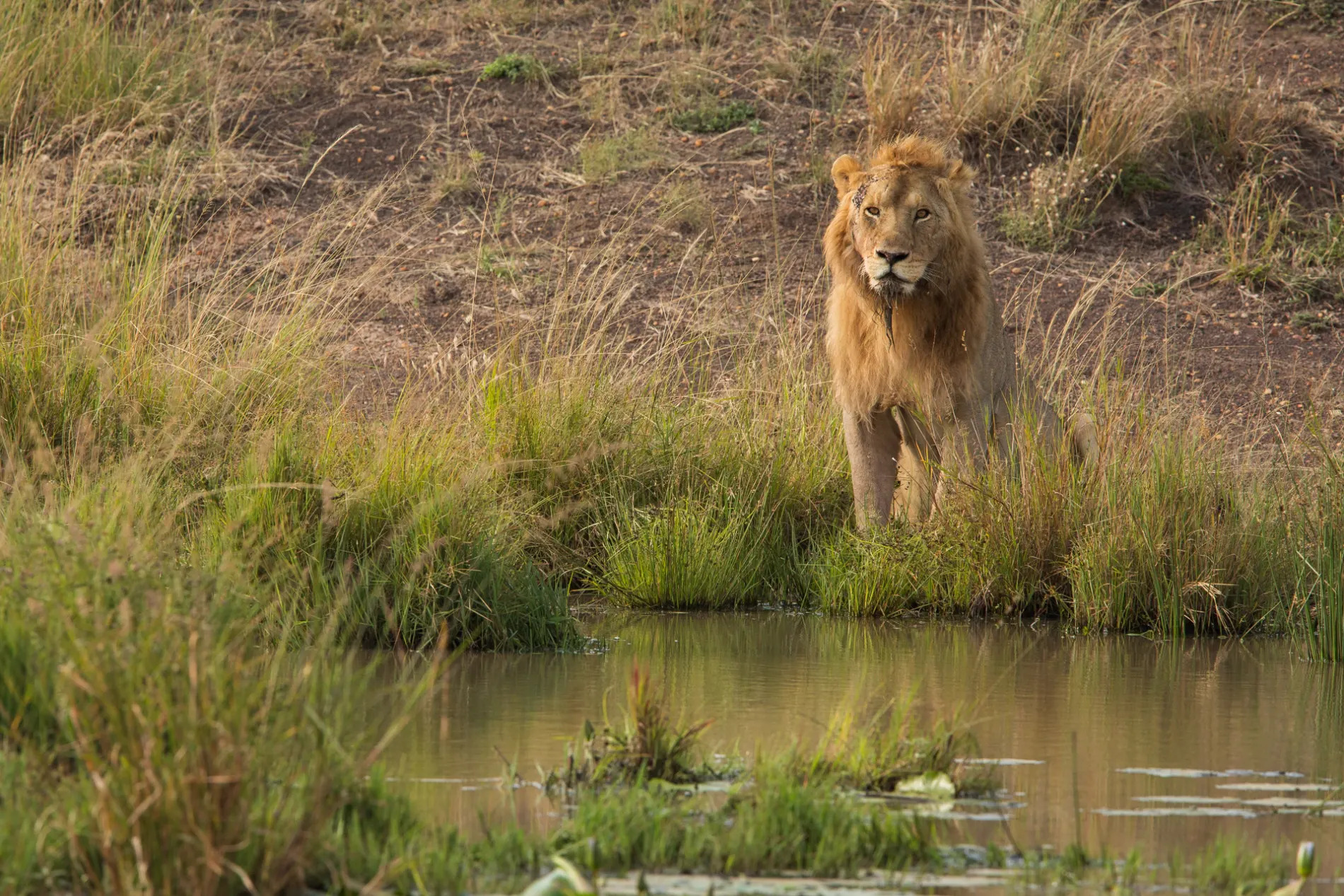
Pharaoh drinking from Egyptian Goose Dam. [f 8.0, 1/500, ISO 500]
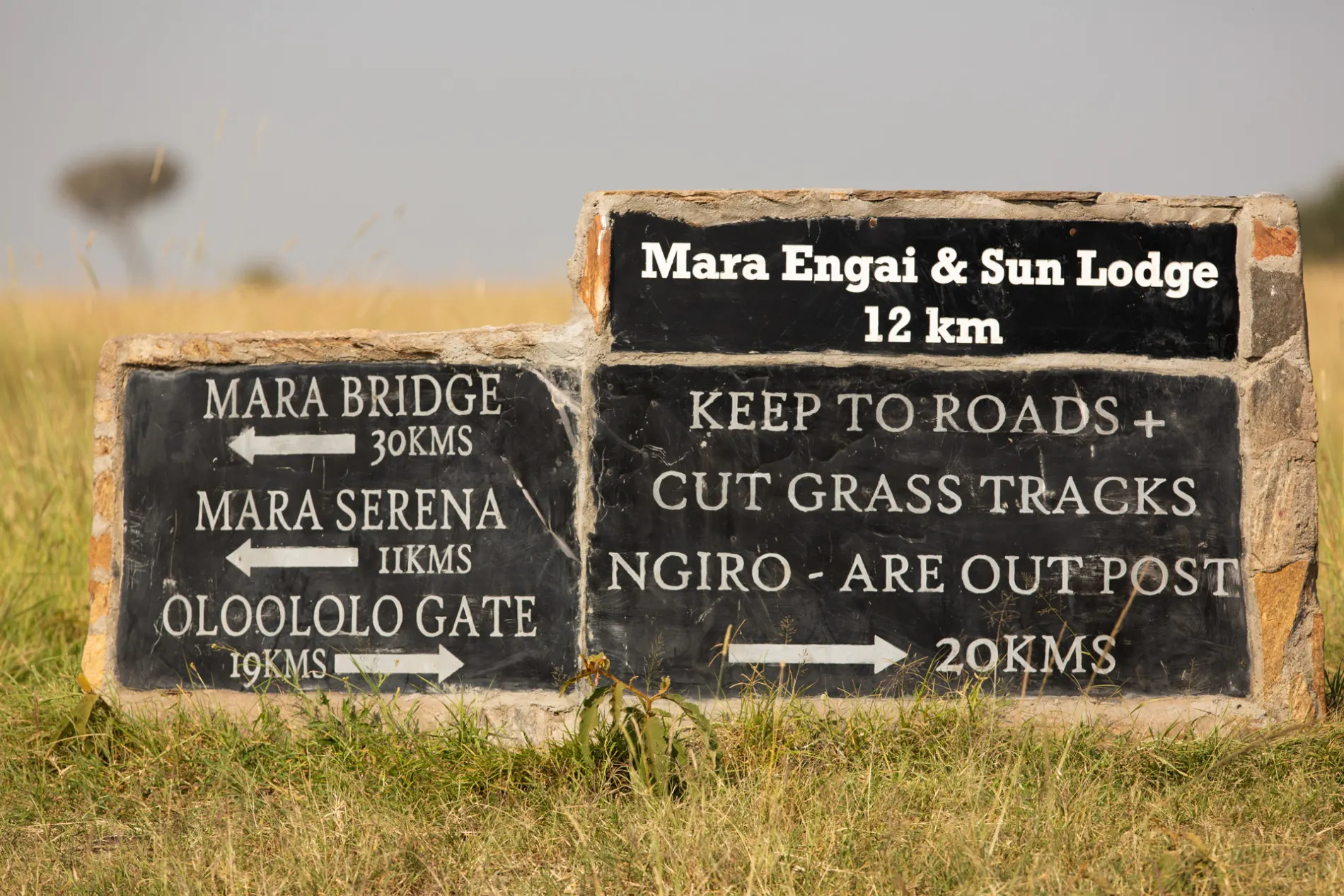
At prominent intersections throughout the Mara Triangle, you find signage indicating distances to prominent land features, entry gates, rangers posts and even some camps. I can’t help but chuckle to myself when I drive past this particular sign. The reason: local guides and rangers call this sign post “50 km”. For months I could not understand why when there are five distance figures given on this sign, none being 50km. And then a ranger told me that it is called 50km because if you add the 30km to the Mara Bridge with the 20km to the Ngiro-are ranger post you get to 50km. [f 5.0, 1/1250, ISO 200, -0.33]
THIS WEEK A YEAR AGO

This week has seen a lot of river action, but all along the southern areas with dusty and steep crossings. We have yet to have a single crossing further north at the Main Crossing area. Last year, there was a lot of action in the central parts of the Triangle by this stage. It looks like it may still be a week or two before the zebra and the wildebeest make their way towards the infamous ‘Crocodile Crossings’. [f 4.0, 1/1250, ISO 250, +0.33]
TAGGED WITH: Wildlife, Photography, Maasai Mara, Safari, Kenya, Migration, Hot Air Balloon, Wildlife Photography, Lion


